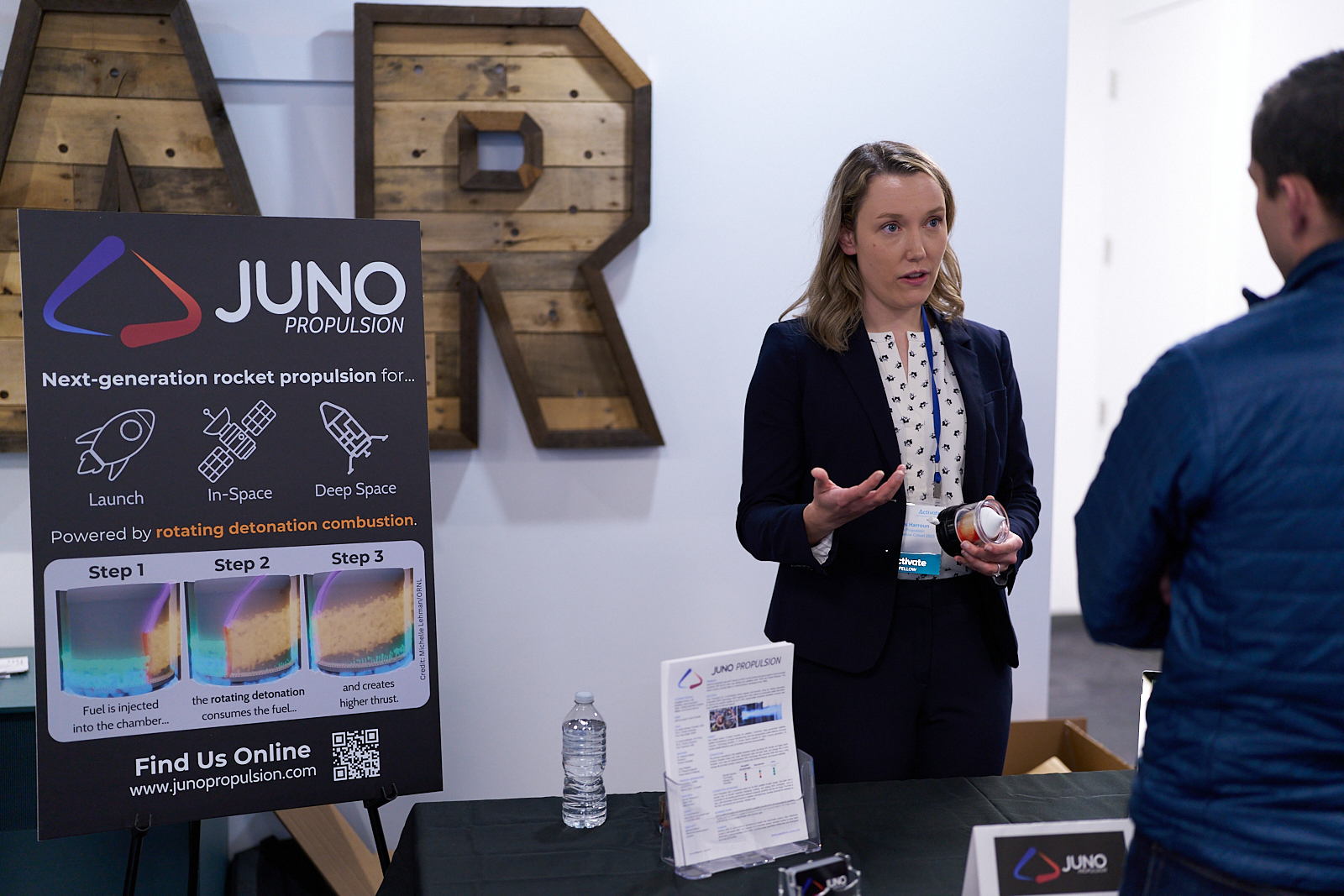A Q&A with Alexis of Juno Propulsion
New ventures and investments in aerospace are helping to democratize aerospace access. In the future, we believe travel across the globe or into space will become increasingly common, affecting industries like heavy manufacturing, communication, and personal travel. But these advancements will not be possible with the technology of today.
Since the 1950s, engineers have used the same methodology for high power density. Rockets, land-based power generation, and jet engines all need as little fuel as possible to create a lot of power. Accordingly, the Brayton thermodynamic cycle has been used to power everything from SpaceX Falcon 9 to the GE engines that fly the Boeing 737.
Alexis Harroun, founder and CEO of Juno Propulsion and Activate fellow, saw the opportunity to innovate here and got to work building upon this existing rocket propulsion technology. We recently sat down with her to learn more about rotating detonation combustion, how she became so interested in this problem space, and where she sees her business in the next five years.
Reducing fuel needed for space missions seems like a daunting task. What gave you confidence to work on a new propulsion technology that could help solve for this?
I started Juno Propulsion because I wanted to build the propulsion systems that enable the next phase of spaceflight. When you look at a typical rocket launch, about 90% of the weight at takeoff is just the fuel. Even a small increase in the engine performance, 2% in what we call specific impulse, can reduce the amount of fuel enough that we can double the amount of cargo on board. At Juno, we are working on a new rocket propulsion technology — called rotating detonation combustion — that can increase that specific impulse by up to 10%. We think this is the enabling technology to open up space access to the world, and our team has spent a collective 15+ years perfecting the technology.
Today, we don’t think much about the emissions from rocket launches. In 2022, eighty-seven launches took off from the United States, and we estimate that will double by 2030. We at Juno are excited to see the space economy take off, but we need to also consider our climate impact. Those 87 launches are estimated to have emitted 34 kilotons of carbon-based greenhouse gasses and large amounts of unburned carbon, with much of it injected straight into the upper portions of our atmosphere. By using our higher performance technology, we are looking to reduce those emissions by 30%. Our space economy is only going to positively benefit us on Earth if we are protecting our planet along the way. It’s too important not to.
What technical milestones do you hope to achieve over the next 12-months and where do you hope to be in the next 5 years?
The name of the game is making fire. We are going to hot-fire our first demonstrator in the next few months. This means putting our prototype on a test stand, firing it, and measuring the benefit from our design. The key parameter we are looking to prove out is the performance of novel, non-toxic fuels for our propulsion concept.
By 12 months, we are planning to test our minimum viable product — a full propulsion system. To us, it’s important that we prove out the ways we are addressing customer demands for performance, reliability, and cost. In 5 years, we want to be regularly delivering our propulsion units to our customers and continuing to develop into new markets. We see our technology as the natural next step in chemical propulsion, but we have work to do to expand into all the systems it’s used today.
How did you personally become so interested in aerospace and specifically rocket launch applications?
I personally started my path to being a rocket nerd during my time as a student at the University of Washington. For three years I worked with an amazing team designing, building, and testing rocket motors. We would travel to a gravel quarry north of Seattle to do our static testing and get to make fire with our creations. Every summer, the team would travel down to either Utah or New Mexico, strap our rocket motor to the team’s rocket, and see it fly into the sky. It’s hard to convey how addictive it is to be a part of a great team celebrating a rocket launch. It doesn’t hurt that it’s a lot of fun to make propulsion systems.
After leaving undergrad, I was determined to work on propulsion systems that would make a positive impact on the space industry. I was lucky to land at Purdue University, pushing the state-of-the-art in propulsion technology. The type of propulsion we use to launch rockets today, chemical propulsion, is based on the same physics we have been using since the 1950s. The whole architecture of space launch is based on those physics and how it limits what we can do in space, and to me, it’s time to change. And that’s the exciting future we are hoping to build.
